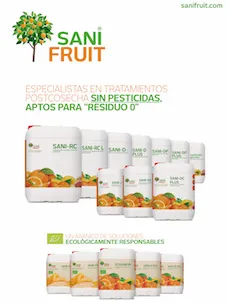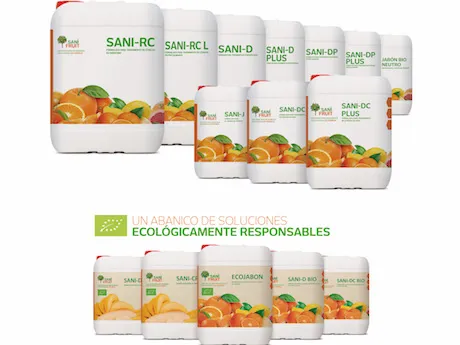Edible coatings are formulated biopolymers that use combinations of different food materials in order to offer economic alternatives that are more natural than the usual synthetic waxes and that contribute to maintain the quality and safety of the fruits during their commercialization, while increasing their commercial life mainly during cold storage periods.
 The application of cold in the conservation of citrus fruits can pursue different commercial purposes: lengthening the marketing period of late varieties, placing the fruit in the market in periods of time when it isn't being produced, minimizing losses due to dehydration, slowing down the growth of pathogens, maintaining its quality during transportation to distant markets, supplying customers at times when weather conditions do not allow harvesting, preserving fruit during periods of high risk of frost in the field, delaying the supply to factories of fruit derivatives, as well as in quarantine treatments for the control of pests and diseases on fruits exported to certain countries that demand them. Therefore, its application is habitual and very varied.
The application of cold in the conservation of citrus fruits can pursue different commercial purposes: lengthening the marketing period of late varieties, placing the fruit in the market in periods of time when it isn't being produced, minimizing losses due to dehydration, slowing down the growth of pathogens, maintaining its quality during transportation to distant markets, supplying customers at times when weather conditions do not allow harvesting, preserving fruit during periods of high risk of frost in the field, delaying the supply to factories of fruit derivatives, as well as in quarantine treatments for the control of pests and diseases on fruits exported to certain countries that demand them. Therefore, its application is habitual and very varied.
Cooling not only reduces the growth of fungi, but, by delaying the senescence of the fruit, it maintains a higher content of antifungal substances (phytoalexins), which improves their physiological resistance to microbial attack.
During the cold storage stage, the fruit looses more than 5% of its weight due to dehydration. For this reason, it is advisable to maintain an adequate relative humidity in the chambers and to use coatings that prevent dehydration, which will benefit producers by increasing the performance of the products.
The susceptibility of citrus fruits to low temperatures depends on their specie and variety, where grapefruit and lemons are the most sensitive to cold. In addition, numerous factors both before the harvest and after it, such as environmental conditions, treatments during cultivation, the tree's condition, and the maturity of the fruit influence how much cold they can resist.
In citrus fruits, the cellular changes that occur as a result of the cold result in lesions such as albedo browning, membranosis, pitting, or scalding.
Another type of damage by cold, less frequent than the previous ones, is aqueous decomposition, a condition in which the fruits acquire a soft and spongy appearance as if they had been frozen. The manifestation of these symptoms can occur in the conservation chamber itself after a certain period of cold storage. The risk of the appearance of symptoms increases with the time that the fruits are kept in cold storage and with lower temperatures, the total manifestation of the damage occurs when the fruit is transferred to room temperature.
However, in some cases, the symptoms are not visible while the fruit remains in cold storage and only manifest when the fruit is transferred to room temperature. Even though low temperatures and varietal susceptibility are determining factors in the occurrence of cold damage, there are other factors as well. This type of damage can generate losses to warehouses due to claims at the destination or due to a decrease in performance.

The edible coatings that Sanifruit uses to treat products are SANI-RC (application in Drencher) and SANI-RC L (application on line), and they have the following main characteristics:
- They prevent cold damages during refrigeration, providing the citrus fruit with a physical and chemical barrier that prevents and / or in many cases delays the damage.
- Said protective barrier generates a protection against gas exchange with the exterior and therefore also decreases weight losses due to dehydration of the fruit.
They also enhance the effect of other products that are applied in conjunction with it, such as phytosanitary products, food preservatives, helping to improve the fruit's persistence and durability and thus lengthening the commercial life of citrus during storage.
- These formulations together with our treatments without residues allow us to make short-term conservation (less than 30 days) in the case of the Navel Group, and an intermediate duration (more than 30 days, but less than 60 days) in the case of the Blancas Group, as long as the fruit has been harvested in its optimum state of maturity.
- Formulation: the development of this coating has been a challenge for the company, which used state-of-the-art technologies to market a product with a high dispersion facility, without using alcohols or other solvents that pose a greater risk to the applicator.
More information:
Erica Biel Martin
Sanicitrus SL's Director of R+D+i
Chief Quality Officer
